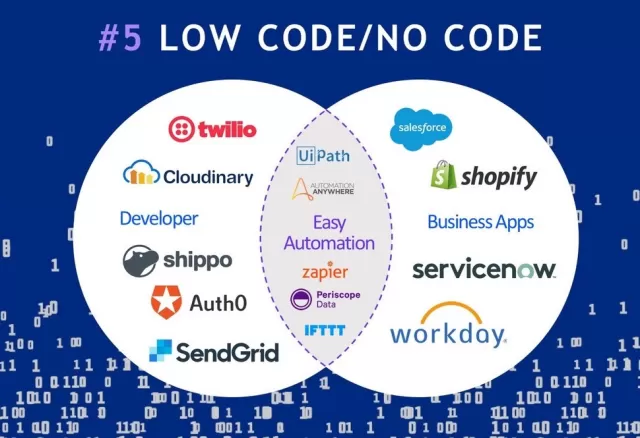No-Code/Low-Code Solutions to Better Your Technology
Feb 11, 2023
The rigidity and inflexibility of legacy platforms is one of the greatest issues businesses have when it comes to technology. These platforms make it challenging for business and IT leaders to smoothly implement a change in the face of constantly changing business needs.

In the cutthroat business world of today, organizations must choose solutions that facilitate rapid and effective transformation. The rigidity and inflexibility of legacy platforms is one of the greatest issues businesses have when it comes to technology. These platforms make it challenging for business and IT leaders to smoothly implement a change in the face of constantly changing business needs.
Sometimes a crucial improvement or new feature just cannot be added to an organization's existing tools. Others risk breaking current systems by introducing any kind of update to a legacy platform. It is occasionally possible to make a modification, but doing so is a laborious process that takes months to completely implement, entails a sizable team of highly qualified IT personnel, and incurs considerable expenditures. The adjustment proves to be a significant strain on the company's limited resources.
Businesses can no longer function in this sluggish, rigid way in today's market due to the increased level of competition. Instead, in order to compete effectively and provide the best customer service, businesses must be flexible when it comes to change. By resolving to alter their technology, companies from various industries can achieve this.
Using a cutting-edge data platform or other technology that offers the most flexibility is a way to future-proof your system. The VP of platform engineering of GEP, Suprakash Das, asserts that businesses want a platform that is cutting-edge, scalable, durable, and adaptable.
Although they have different designs that make them significantly more flexible, open, and user-friendly, modern data platforms can manage many of the demands of an enterprise resource planning (ERP) platform. To achieve utmost efficiency, it is essential that businesses be able to manage their technology or platform themselves. The time to value is ultimately shortened by self-service capabilities.
Shorter time-to-value is achieved by modern, future-proof platforms that offer essential capabilities to enable visibility, minimize silos, and be flexible and simple to customize to meet individual company needs. The key to establishing a future-ready organization is to develop data-rich technological platforms that promote expansion and innovation. During times of systemic change or transition, adaptability is a crucial success component.
Any modern data platform that is future-proof must have no-code or low-code solutions. Through a graphic, user-friendly interface and substantially less coding knowledge than is generally needed, these solutions make it possible to create software applications. IT professionals may concentrate on more strategic projects thanks to the drag-and-drop style, which makes application development accessible to more workers. This is particularly useful at a time when there is a shortage of highly qualified IT personnel.
The use of no-code or low-code development makes it simpler to incorporate changes and new features. Better business-IT collaboration leads to faster innovation, and when the backlog in IT is reduced, IT departments are freed up to take on more complicated projects.
Enterprises can better withstand any disturbances, including economic ones or even threats from cyberattackers, who are on the rise, with the help of a modern data platform with no-code/low-code capabilities that is free of antiquated technologies.
Gartner anticipates that until 2024, businesses will increase their spending on these kinds of capabilities to increase their ability to adapt quickly, including purchasing specialized, more advanced data platforms.
Overall, enterprises may assist ensure that their business will be able to compete and grow by implementing a modern data platform with no-code/low-code capabilities.
